Estimated reading time: 8 minutes
Africa is a continent of vast contrasts and varied landscapes, places where you can truly immerse yourself in timeless scenery of distant horizons and huge open spaces. It is one thing to enjoy a moment in an incredible landscape, and entirely another attempting to photograph it as you see it.
Here are some inspiring images and tips to capture fantastic landscape photographs.
In order to get the best out of a scene on your photographic safari, you should consider the equipment required. A wide angle lens, preferably between 10-20 mm is essential, as is a tripod, so that your camera can be absolutely still while taking a picture.
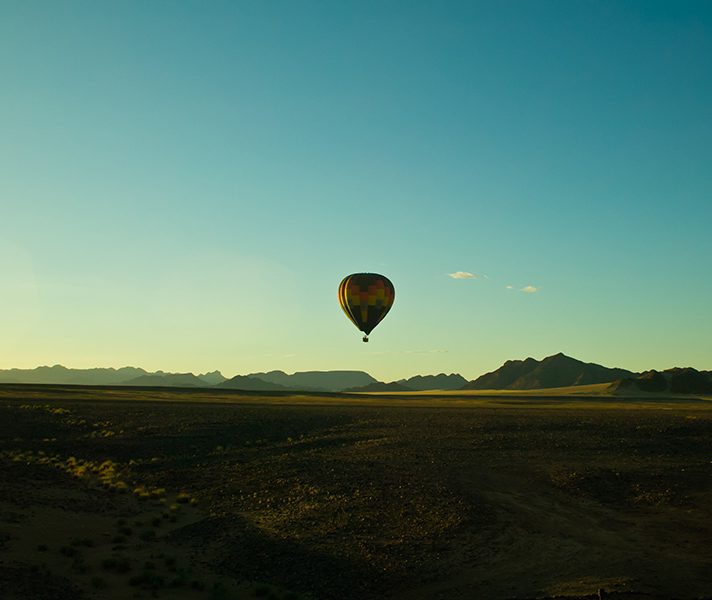
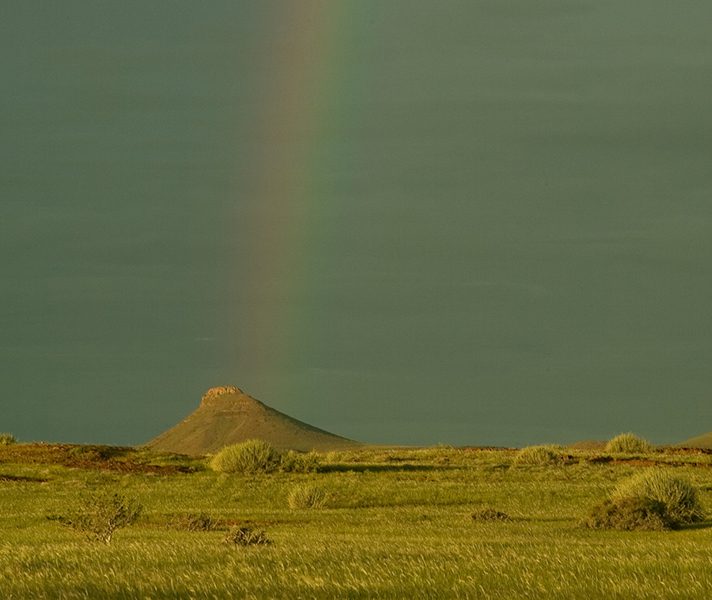
Photos: Balloon safari shot at Kulala Desert Lodge near Sossusvlei in Namibia; Rainbow over the desert shot at Desert Rhino Camp in Damaraland, Namibia.
Shooting at Different Times of the Day
The timing of when to shoot an image is also important, as the same scene can look dramatically different depending on the time of day and the light. The best times to shoot are around dusk and dawn, when the angle of the sun produces long shadows and beautiful golden light.
However, after sunset or before the sunrise can produce some lovely results as well. The colours of twilight can be otherworldly. Moving elements (such as water and clouds) blur during long exposures and a colourful, soft light bathes the landscape. Twilight photography means shooting on the edge of light—which means long exposures. Adjust your ISO to lengthen or shorten exposure times if necessary. The following image of the baobab tree is an example of photographing a landscape at night, using a long exposure to capture the stars.

Photo: Baobab shot in the Okavango Delta, Botswana.
Dealing with Exposure & Contrast
Exposure can be tricky when you are dealing with a scene that has a lot of contrast, like the image with the wildebeest below and the sun in the background. In this instance, you can do two things: either shoot multiple images of the same scene at different exposures, then blend them together in an image editing program such as Photoshop using the High Dynamic Range function, or you can use a graduated filter. I tend not to use filters, but there are some very interesting effects that can be achieved by using them.
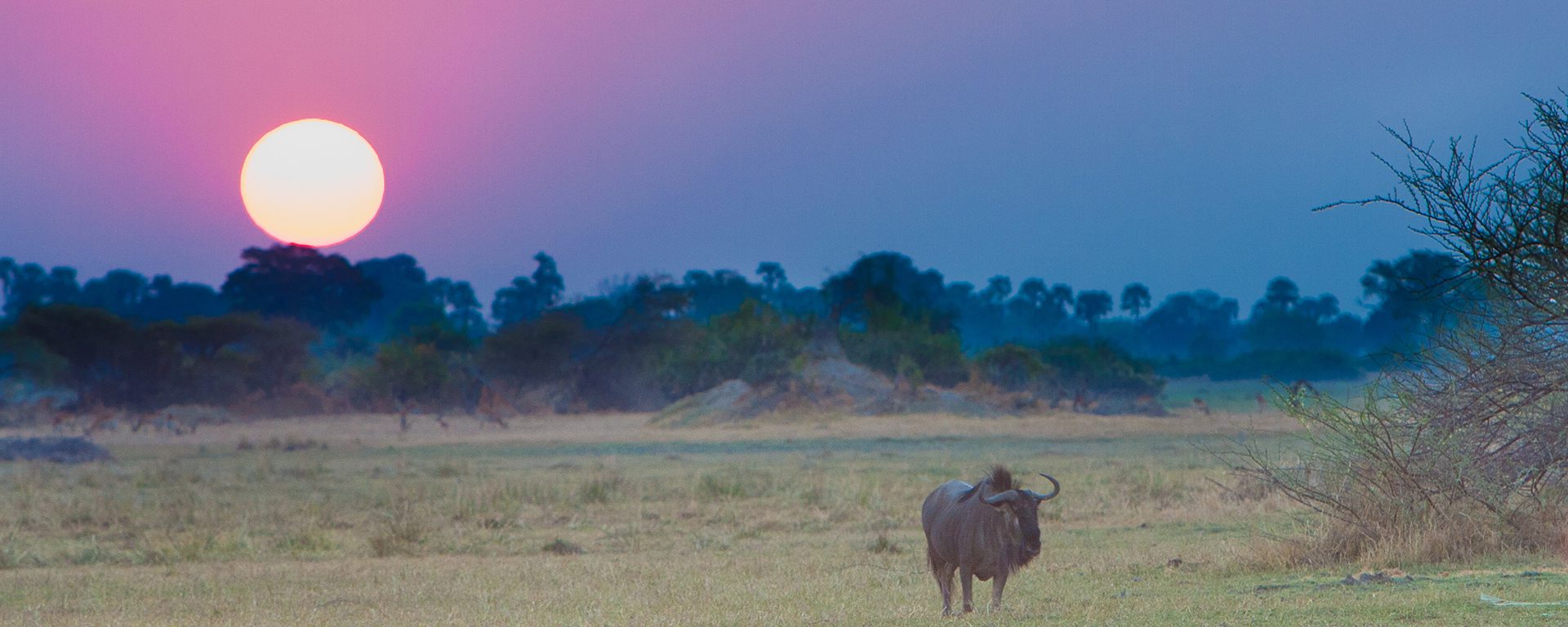
Photo: Wildebeest sunset shot in the Okavango Delta, Botswana.
The Impact of Backlighting in Landscape Photography
Although some photographers live by the maxim “shoot with the sun at your back,” I’m always on the lookout for opportunities to do the exact opposite. Backlighting presents some unique technical challenges, but the results are well worth the effort. Backlighting can often be dramatic, creating striking and graphic images that attract attention from viewers.
The impact of backlighting can be especially powerful when the subject is in the light and the background is in shadow. Flare is a significant challenge when working with backlit subjects- to prevent it, shade your lens with a lens hood or your hand. This stops stray light from striking the glass.
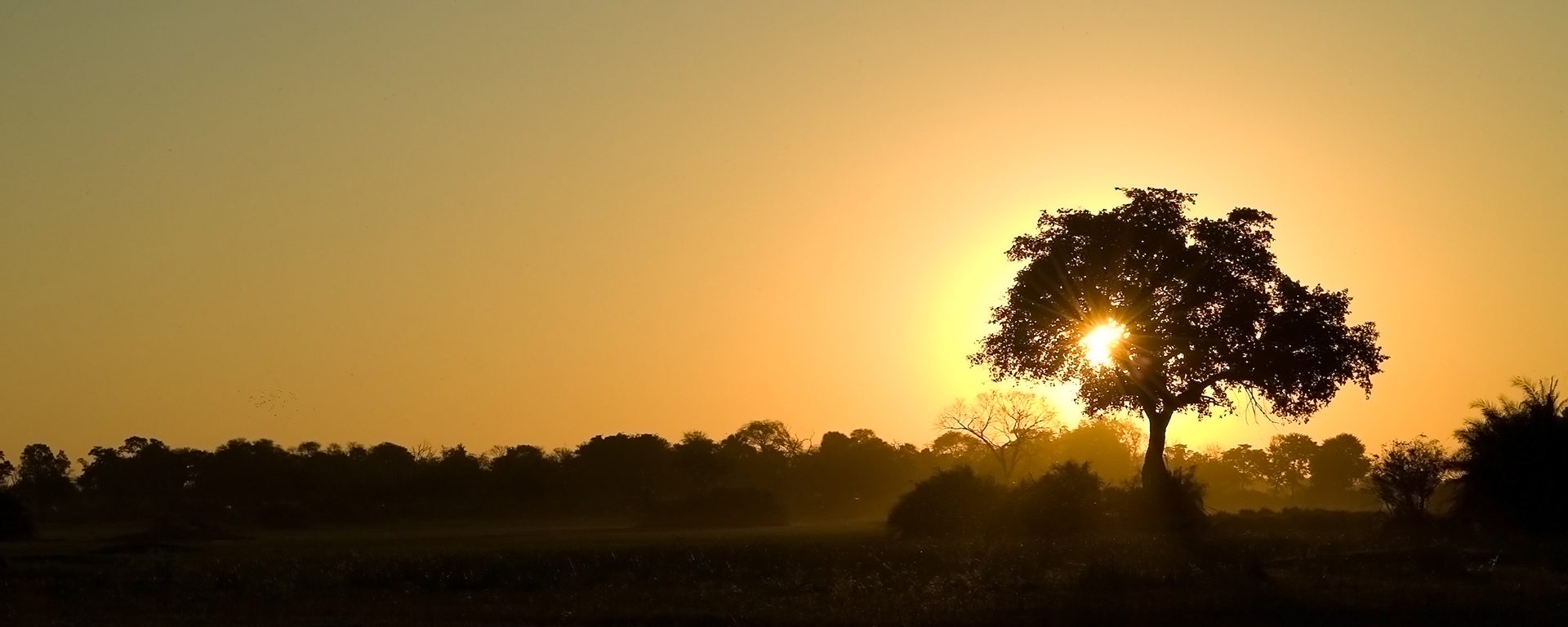
Photo: Mombo sunset shot in the Okavango Delta, Botswana.
The Rule of Thirds & Depth of Field
As I have mentioned in a previous post, the Rule Of Thirds is an important factor in making a good landscape image- remembering where to place your horizon or focal point of the image makes the difference between a great picture and an average one! By this I mean that a picture has a more pleasing aspect if the horizon or aspect of the image you want to draw attention to is closer to the top or bottom third of your frame.
Depth of field must also be considered, although there are no hard and fast rules to landscape photography- sometimes a shallow depth of field can draw the viewer’s eye to a focal point in an image. If you wish to have the entire image in focus, remember to close down your aperture for a longer exposure.
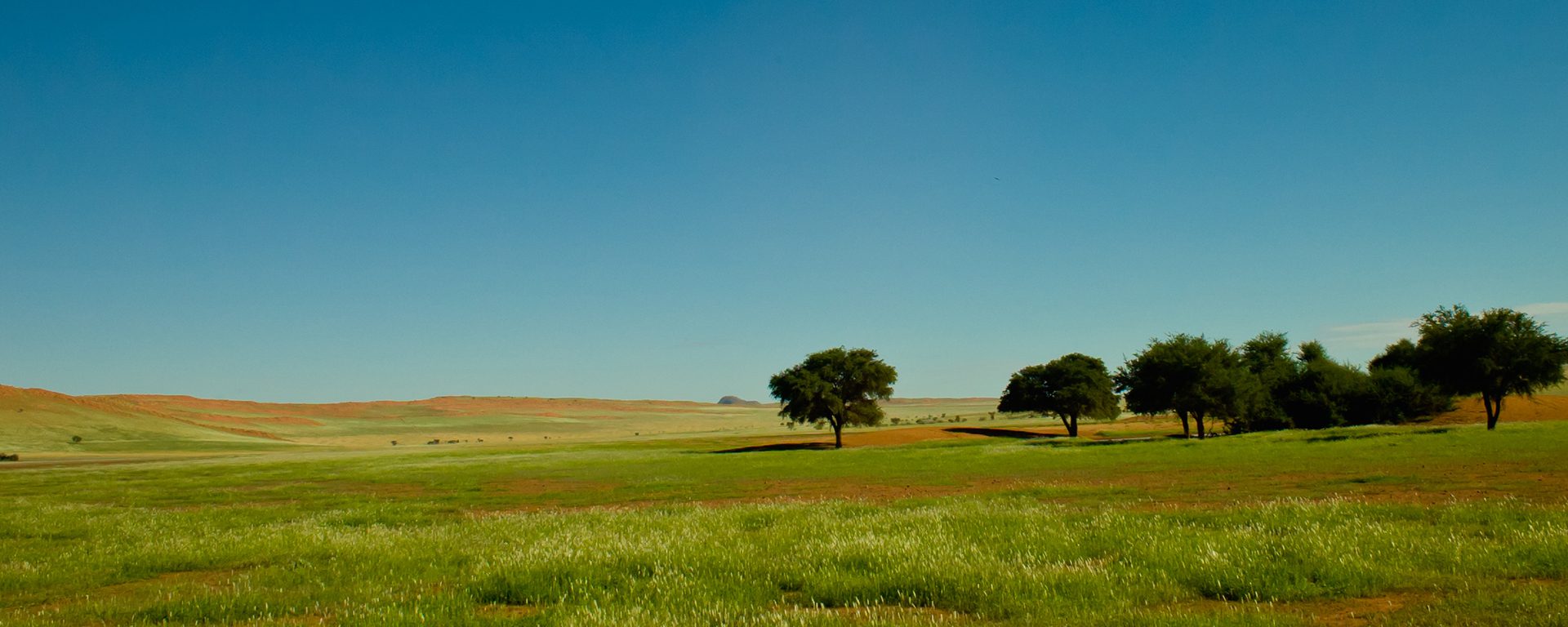
Photo: Summer desert landscape shot at Wolwedans in Namibia.
Adding a Focal Point to Showcase Sense of Scale
African landscapes are usually vast, and sometimes it is an idea to introduce people, animals or objects into the scene in order to give a sense of scale. Often when out photographing wildlife, it makes for a beautiful composition to incorporate animals into the environment in which they are found, such as this image of a black rhino in Namibia.
Consider where to put yourself when photographing a landscape- sometimes even moving a few feet can make a huge difference to an image. Try moving around and trying different perspectives and angles until you find what you are looking for.

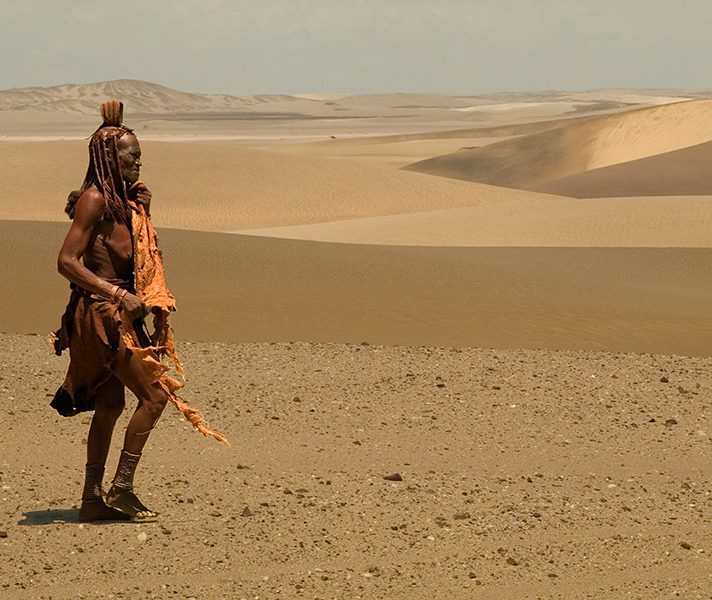
Photos: Desert rhino shot at Desert Rhino Camp in Wolwedans, Namibia; Himba Woman shot on the Skeleton Coast, Namibia.
The Value of Aerial Photography
I love to shoot landscapes from the air- and often if you are visiting Africa on a safari, you will find yourself in a light aircraft or even a helicopter- keep your camera with you for the flight! I always look for interesting compositions and shapes when looking at the landscape from above, and often I find abstract images most pleasing.
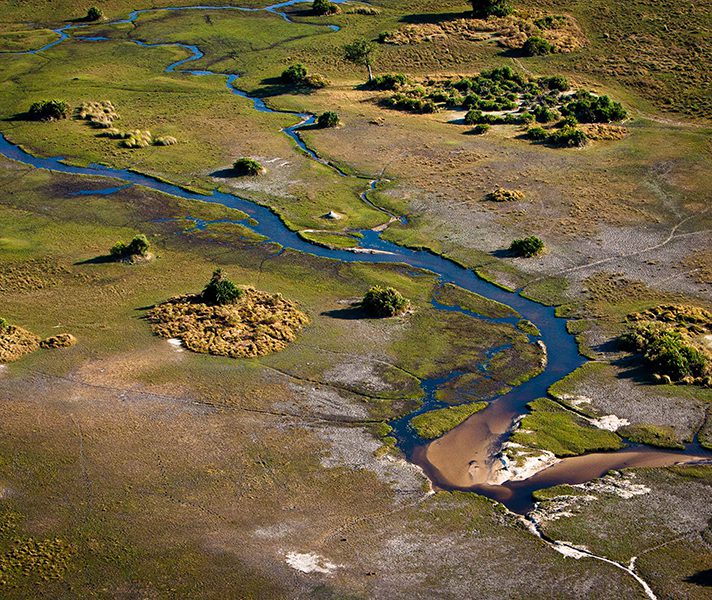
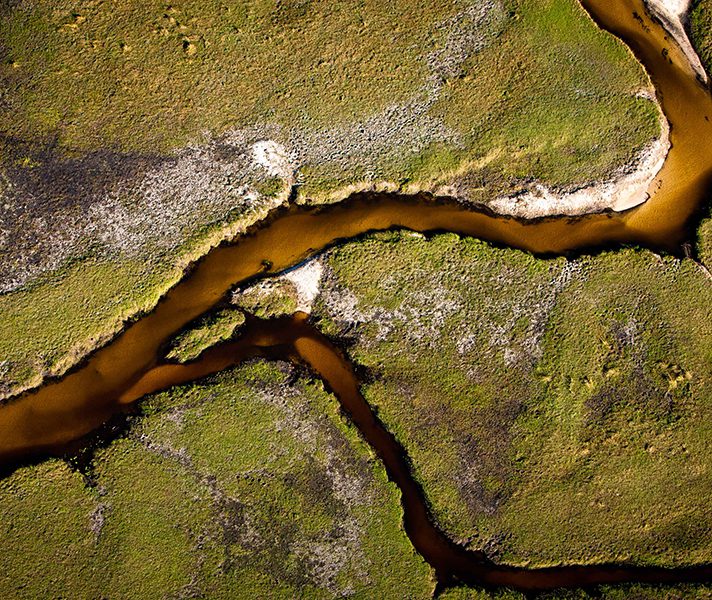
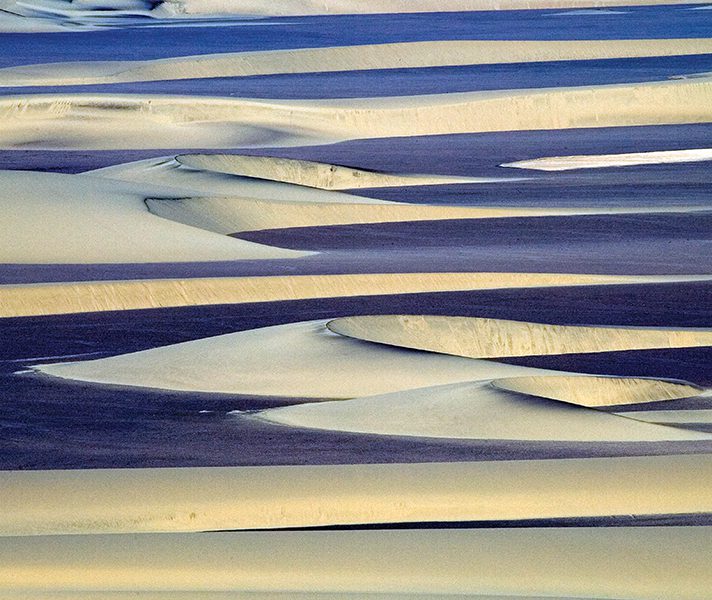
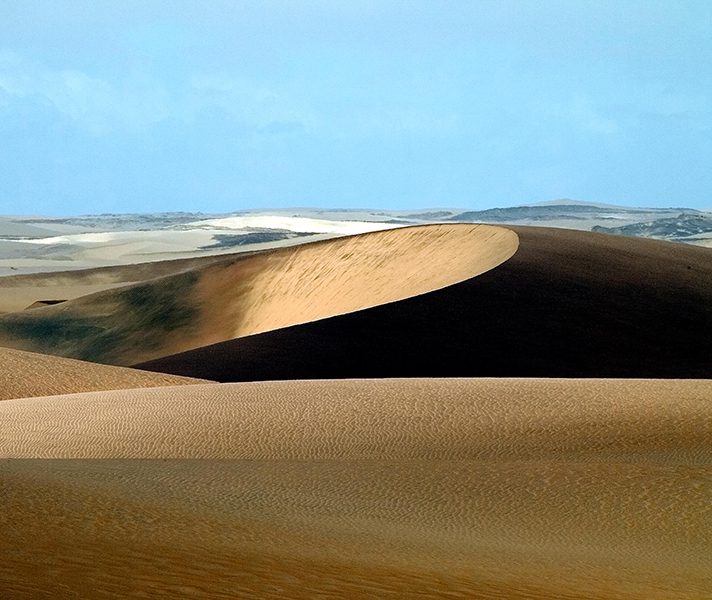
Photos: Aerial shots from a small plane taken of the Okavango Delta, Botswana
Nature has an infinite variety of interesting shapes—use them to your advantage! Look for swirls, circles, triangles, curves, and other simple, powerful shapes to create boldly graphic and visually engaging images—such as with this curve created by the interaction of colours and light.
Looking for Interesting Lines & Shapes in Landscapes
When composing your shot, look for dynamic lines or shapes that can give your image the edge. In the dune images below, you notice how I composed these shots to have a strong diagonal element moving from the top corner to the bottom. This draws the viewer’s eye into the picture, and encourages a closer look.
Nothing demands attention more than leading elements. Leading lines in particular can be very powerful, but leading elements can include other shapes, or even a progression of objects from foreground to background, encouraging the viewer to travel deep into the composition, creating a high level of visual engagement. Lines provide an obvious visual cue pointing to what is important in an image, but if you use a leading line, make sure it points somewhere interesting. If it points outside of the image frame, then you’re not going to entice the viewer, but rather confuse them.
Photos: Dune detail shots taken on the Skeleton Coast, Namibia.
While there are no hard and fast rules about how to photograph landscapes, hopefully these tips will inspire you to go out, get creative and capture some great images, and remember that beauty really is in the eye of the beholder!
